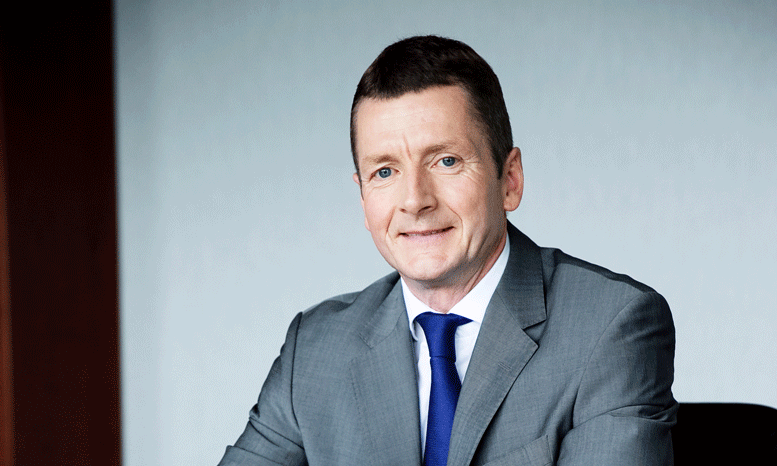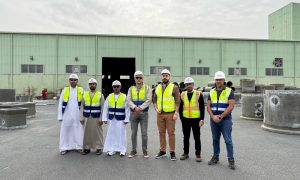Printing out a 3D strategy for construction
Jeppe Frandsen of Canon Europe describes how the imaging solutions giant plans to target the construction 3D printing market

With 3D printing continuing to be an area of interest for the global construction, architecture and engineering fields, manufacturers and suppliers of the technology have been investing significant amounts of capital into the research and development of new methods and systems for the industry to use.
According to a PwC report, advances in 3D printing technology are set to ‘seamlessly link the physical and digital worlds’. With most construction projects able to be divided into three categories – finance, materials and labour – 3D printing could be a potential game-changer for the construction industry as it would significantly reduce the amount of money, resources and time being spent to bring projects to fruition.
Given the potential size of the market for the technology, it’s not a surprise to find that giant multinational corporations are stepping up their interest in 3D printing. Just a few short years ago, the technology was the domain of start-ups and smaller innovators. Now however, even the larger multinationals are getting into the act as new opportunities continue to open up.
As a global imaging solutions provider, Canon has extensive experience in meeting the demands and expectations of its international customer base. Having started life as a company that looked to make high-quality cameras available to the mass market, it has expanded its product range through to fields as diverse as X-ray machines, to multi-function and production printers.
Now the company is turning its eye towards the nascent 3D printing industry, with early forays being made into small-scale printing projects that are intended to facilitate its long-term plan to enter into the manufacturing and construction industries.
“We see a growing number of customers who are very keen about adapting to this new technology, and of course getting the benefits out of it. We can also see that the present supply in the market, at least in Europe, doesn’t have the same strength that we have in services and support,” says Jeppe Frandsen, executive vice-president, Industrial and Production Solutions for Canon Europe.
Speaking to Big Project ME at Drupa 2016, Frandsen explains that Canon has noticed the growing trend towards 3D printing as its traditional business with architects, engineers and the construction industry has begun to decline.
“If you look at our traditional business for architects or (for the construction industry) – printing out drawings and so on, that business is declining. Many of the architects now use tablets, screens or projectors to showcase their drawings. So we’ve been looking at different opportunities to bring new technologies to these customers.
“Here, 3D printing is the most obvious opportunity, that’s the reason we’ve started (looking into it). It was really to leverage things on our existing ‘go-to-market’ structure and bring more value into the corporation with these customers from the architect, engineering, construction and manufacturing sectors, which are key customer groups,” he adds.
“That also means that when we look at 3D printing, it’s in a different context to our Canon core business. Because there we look at being number one, but in this market, we go more in terms of increasing our engagement with selected customer groups – the architects, engineers, construction and manufacturing industries.”
With all predictions pointing towards the major growth in 3D printing coming from the high-end spectrum of off-site production and manufacturing, Frandsen says that Canon is taking a cautious and studied approach towards entering a market that requires specific skills and competencies.
“First, we have to build up our skills and credibility in what we call the professional 3D printing market, and that is mainly in prototyping, modelling and also for small production series. If you need to do 300 pieces of a component, which has electronics in it or something like that, then we can do it. That’s the market we’re currently in.
“Later on, we expect to also go into the high-end manufacturing market. But we won’t be doing that, I think, before we have Canon technology. We’re not in that market yet, but our ambition is to come into that market in the future,” he asserts.
Although he’s reluctant to put a time frame on when this will happen, Frandsen says that Canon has already started showcasing samples of its 3D printing technology to its customers at the 2015 Canon Expo.
“(At Canon Expo) we show technology for the next five years. We had print samples of our Canon 3D printing technology. It’s difficult to say exactly when it will come, but you see today that in 3D printing there’s a lot of suppliers and a lot of different technologies.
“So if we come with something, we have to come with something different. We cannot come with a mediocre product. So we really have to spend the time and do proper research and development to make sure that when we come with something, we can say with certainty that it’s disruptive compared to what’s in the market today.”
For now however, the focus remains on perfecting what Canon can offer to the market, and Frandsen insists that it is this slow and steady approach that will bring long term benefits to the company as the competition around it heats up.
“In our experience so far, in the market we’re in today, the architects, construction professionals and also those manufacturing companies that we work with, they don’t care too much if it’s a Canon 3D printing system or a starter system.
“What they’re keen on is having a partner that can help them develop the applications and develop the methodology to fit this technology into their processes. (Our job is) to make sure that they get their returns, and that we give them a very good service and support,” he concludes.

























